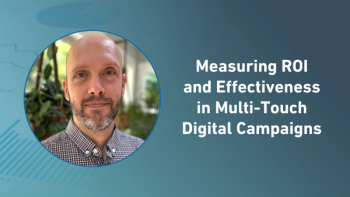
A Closer Look at NIH Grant Terminations
In this video interview, Michael Liu, medical student and researcher at Harvard Medical School, discusses a recent study he conducted on the characterization of research funding cuts.
In a recent video interview with Applied Clinical Trials, Michael Liu, medical student and researcher at Harvard Medical School, discussed a recent
ACT: Can you tell our audience a bit about the paper you recently authored on NIH grant cuts?
Liu: We and a team of really talented researchers—some at Harvard and some at Yale—did a recent analysis. First of all, what motivated this analysis, we were in late February, early March, we were following the news of NIH grant terminations, which I'm sure many listeners have been following very closely as well. We are all part of organizations and institutions that receive NIH funding, and I actually have colleagues and mentors who have received grant terminations themselves. This is something that's very near and dear to our hearts, and even though during this time frame, we were hearing more anecdotes, and there's, frankly, a lot of chaos and uncertainty about both the scope of terminations, what types of grants were being terminated, and who was being affected. As researchers, we're really interested in putting data to stories and subjective reports, so that's what we set out to do in this study.
This study was enabled by a new dataset that was released by the by HHS, the Department of Health and Human Services, and it's essentially using data from their TAGs (Tracking Accountability in Government Grants System) dataset, and this is a new set that was actually, ironically, in response to President Trump's radical transparency around wasteful spending memo, and that dataset has essentially all up to date information about grant terminations in real time. It's a dataset that's updated essentially weekly, if not even more regularly than that. We were able to extract information, detailed information about each grant using their unique identifying number, and then using that information, pulling information and linking that to other datasets to find what institute administered that grant, who that grant was for, what kind of grant it was. Then, I think the really novel part of our study is that we were able to then link that dataset to the NIH RePORTER repository, which is essentially a dataset of all active NIH grants, and that, for the first time, allowed us to provide a denominator, which I think, a lot of news organizations and very, very smart folks have tried to look into this, but, we wanted to get a sense of a top line number of “X” number of grants were cut, but it's much more important, I think, to get a sense of what is a relative impact of terminations when you look at the NIH as the largest funder of all biomedical research globally, what is the relative impact? That's what we ended up doing.
Newsletter
Stay current in clinical research with Applied Clinical Trials, providing expert insights, regulatory updates, and practical strategies for successful clinical trial design and execution.






.png)



.png)



.png)
.png)
